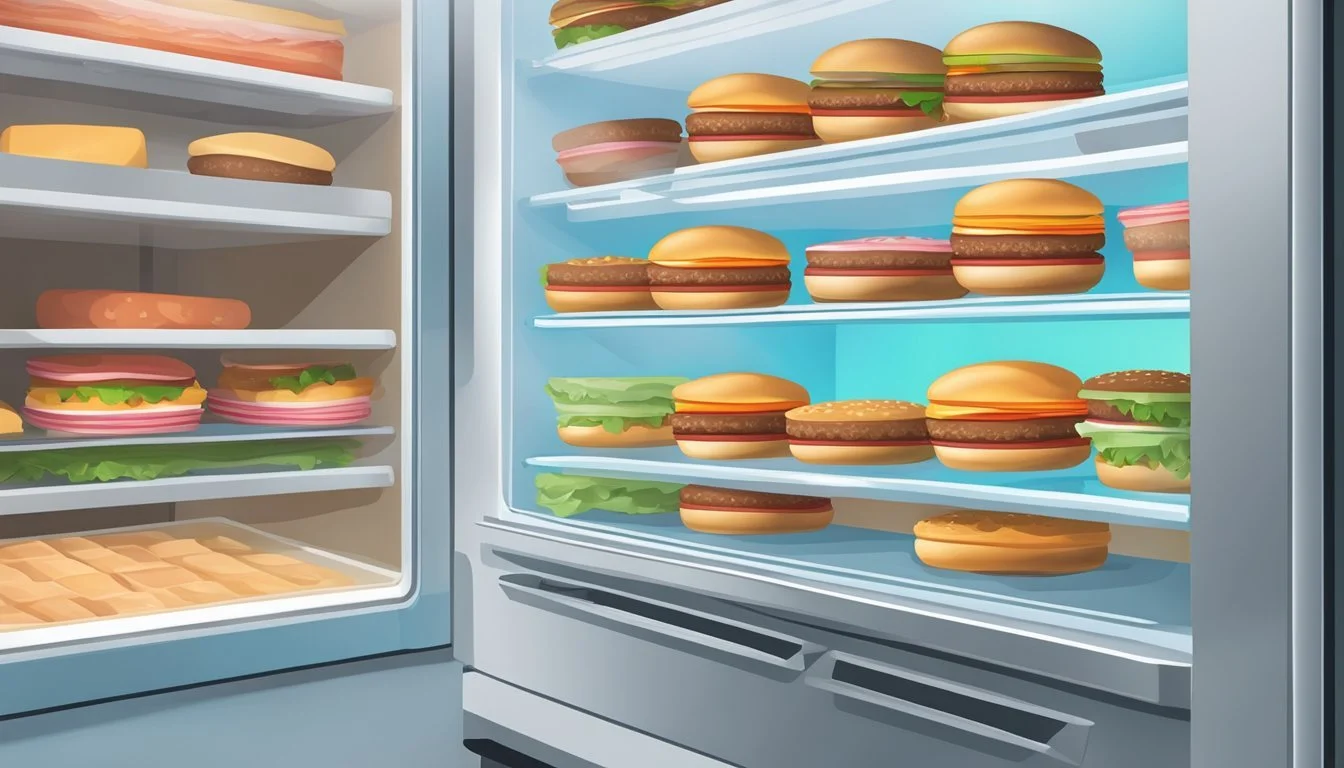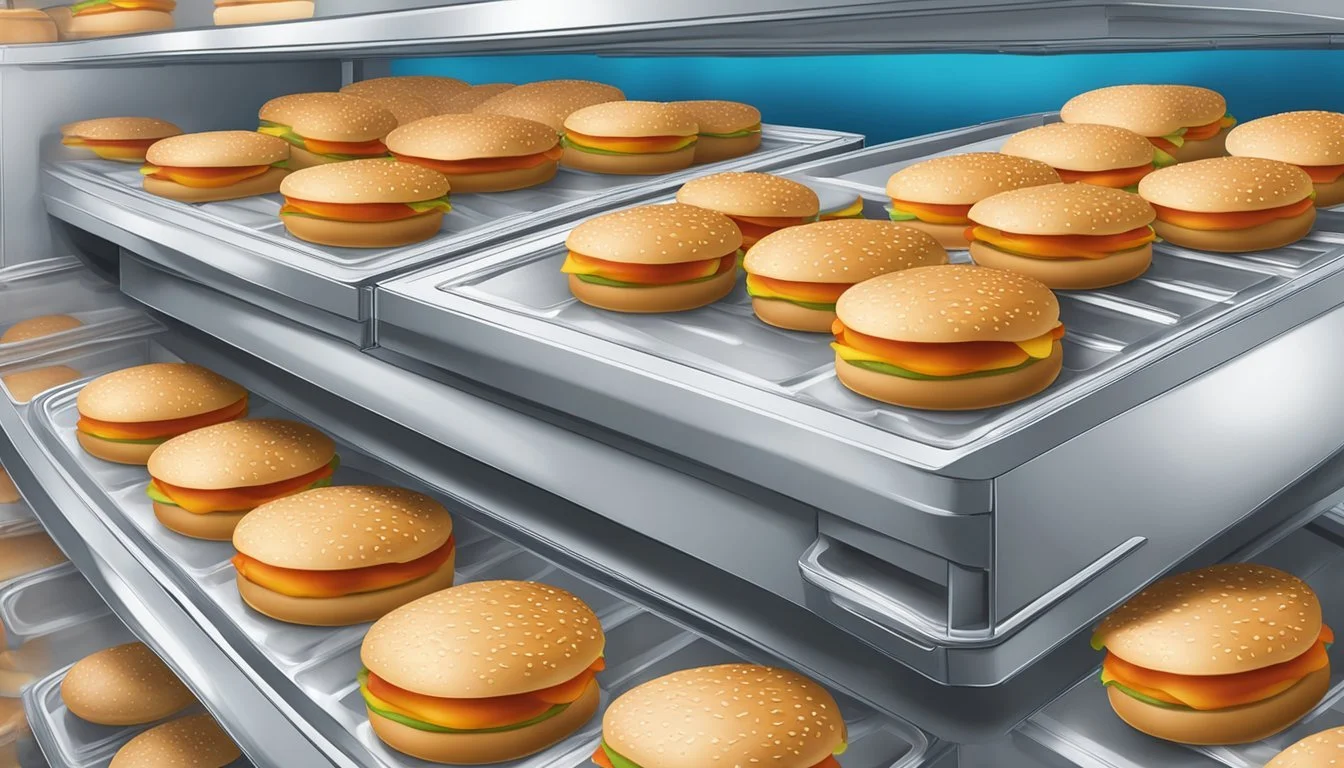Frozen vs Fresh Hamburger Patties: Which Makes the Better Burger?
Hamburger patties are a staple of backyard barbecues and quick weeknight dinners. The debate between frozen and fresh patties has long been a topic of discussion among burger enthusiasts. While some swear by the convenience of frozen options, others insist on the superiority of fresh ground beef.
Both frozen and fresh hamburger patties can produce delicious burgers when prepared properly. Frozen patties offer consistency, longer shelf life, and reduced prep time. They are often flash-frozen at peak freshness, preserving flavor and texture. Fresh patties, on the other hand, allow for customization of meat blends and seasonings, appealing to those who prefer control over their burger's composition.
The choice between frozen and fresh ultimately depends on individual preferences and circumstances. Frozen patties shine in situations requiring convenience and consistency, while fresh patties cater to those seeking a hands-on approach to burger crafting. Regardless of the choice, proper cooking techniques and quality ingredients remain key factors in creating a mouthwatering hamburger experience.
Understanding Hamburger Patties
Hamburger patties come in fresh and frozen varieties, each with distinct characteristics. These differences affect their taste, texture, and nutritional content.
Defining Fresh and Frozen Patties
Fresh hamburger patties are made from ground beef that has not been frozen. They typically have a shorter shelf life and require refrigeration. Butchers or grocery stores often prepare fresh patties daily using quality ingredients.
Frozen burger patties are made from ground beef that has been shaped and then quickly frozen to preserve freshness. They have a longer shelf life and can be stored in the freezer for several months. Frozen patties offer convenience and consistency in portion size.
Both types can be cooked on a grill, in a pan, or in the oven. The cooking method may need to be adjusted depending on whether the patty is fresh or frozen.
Nutritional Comparison
Fresh and frozen hamburger patties generally have similar nutritional profiles when made from the same quality of ground beef. Both provide protein, iron, and B vitamins.
Protein content typically ranges from 15-20 grams per 4-ounce patty. Fat content varies based on the leanness of the beef used, but usually falls between 15-25 grams per patty.
Frozen patties may contain additives for preservation, which can slightly alter their nutritional content. Some frozen varieties include seasonings or fillers, potentially affecting calorie and sodium levels.
Fresh patties allow for more control over ingredients and fat content. However, properly frozen patties can retain most of their nutritional value if thawed and cooked correctly.
Preparation Techniques
Proper preparation is key to achieving delicious burgers, whether using fresh or frozen patties. The following techniques will help ensure optimal flavor and texture.
Handling and Thawing
For frozen burgers, thaw in the refrigerator overnight for best results. If short on time, place sealed patties in cold water for 30-60 minutes. Never thaw at room temperature to prevent bacterial growth.
Once thawed, handle patties gently to maintain their shape. Use a spatula to transfer from package to cooking surface. For fresh ground meat, avoid overworking when forming patties to keep them tender.
Separate patties with parchment paper or plastic wrap before freezing to prevent sticking. This allows easy removal of individual burgers as needed.
Seasoning and Flavoring
Season burgers just before cooking for maximum flavor. Salt draws out moisture, so apply right before grilling. For frozen patties, season as they start to thaw on the grill.
Try a simple mix of salt, pepper, and garlic powder. Or experiment with pre-made blends like Montreal steak seasoning. Worcestershire sauce adds savory depth when mixed into fresh ground meat.
For cheese lovers, stuff patties with cubes of cheddar or blue cheese before cooking. Top with additional slices in the last minute of grilling.
Forming Patties for Grilling
Shape fresh ground meat into patties slightly larger than the bun, as they'll shrink during cooking. Aim for 3/4 inch thickness for even cooking. Make a shallow dimple in the center to prevent puffing.
Use a kitchen scale for consistent sizing - about 1/4 pound per patty is standard. For sliders, form 2-ounce patties. Chill formed patties for 30 minutes before grilling to help them hold shape.
For frozen pre-formed patties, no shaping is needed. Simply separate and cook directly from frozen for best results.
Cooking Methods
Frozen burger patties can be prepared using various cooking methods to achieve delicious results. The key is proper temperature control and timing to ensure food safety and optimal flavor.
Grilling Frozen Burgers
Preheat your grill to medium-high heat, around 350°F. Place frozen patties directly on the grates. Cook for approximately 15 minutes, flipping every 5 minutes.
Use a meat thermometer to check for an internal temperature of 160°F. This ensures food safety and proper doneness. Seasoning can be added before or after cooking, depending on how frozen the patties are.
For gas grills, maintain a consistent temperature. With charcoal grills, create a two-zone fire for better heat control.
Remember to oil the grates to prevent sticking. Avoid pressing down on burgers while cooking to retain juices.
Using Alternative Cooking Appliances
Air fryers offer a quick cooking method for frozen burgers. Preheat to 375°F and cook for about 20 minutes, flipping halfway through.
Oven-baking is another option. Set the oven to 400°F and cook for 35-40 minutes, turning once. Place burgers on a wire rack over a baking sheet for even heat distribution.
For stovetop cooking, use a nonstick skillet over medium-high heat. Cook for 6-7 minutes per side. Cover the pan to retain heat and speed up cooking time.
Regardless of method, always verify the internal temperature reaches 160°F with a meat thermometer before serving.
Safety and Storage
Proper storage and safe cooking are crucial for maintaining the quality and safety of hamburger patties. These practices help prevent foodborne illness and ensure the best flavor and texture.
Proper Storage Practices
Refrigerate fresh hamburger patties at 34-40°F for 1-2 days. For longer storage, freeze patties at 0°F for up to 4 months. Wrap individual patties in parchment paper or plastic wrap before placing them in airtight containers or freezer bags. This prevents freezer burn and maintains quality.
Cooked patties should be refrigerated within 2 hours of cooking. They can last 3-4 days in the fridge. For freezing cooked burgers, cool them completely before wrapping and storing. Frozen cooked patties maintain quality for 2-3 months.
When thawing frozen patties, place them in the refrigerator overnight. Avoid thawing at room temperature, as this can promote bacterial growth.
Cooking to Safe Temperatures
Cook ground beef patties to an internal temperature of 160°F to eliminate harmful bacteria. Use a meat thermometer to check the temperature at the center of the patty.
For frozen patties, cooking time may increase by 50%. Preheat the grill or pan to ensure even cooking. Avoid pressing down on burgers while cooking, as this can lead to dry patties.
When grilling frozen patties, use indirect heat to prevent charring the outside while the inside remains undercooked. Allow burgers to rest for a few minutes after cooking to redistribute juices, resulting in a juicier burger.
Enhancing the Burger Experience
Great burgers are more than just patties. The right buns, toppings, and sides can elevate your burger from good to unforgettable.
Selecting the Right Buns and Toppings
Choose buns that complement your burger patties. Brioche buns offer a rich, buttery flavor, while whole wheat provides a nutty taste. Toast the buns lightly for added texture and to prevent sogginess.
For toppings, start with crisp lettuce and ripe tomatoes. Add cheese slices for melty goodness - cheddar, Swiss, or pepper jack work well. Bacon strips bring a smoky crunch.
Sauces are crucial. Mix mayonnaise with sriracha for a spicy kick. Barbecue sauce adds sweetness and tang. For a classic taste, combine ketchup and mustard.
Pickles and onions provide acidity and crunch. Try caramelized onions for sweetness or raw red onions for sharpness. Avocado slices add creaminess to keto-friendly burgers.
Pairing with Sides
French fries are a classic burger companion. For a healthier option, try sweet potato fries or make them in an air fryer. Onion rings offer a crispy alternative with a sweet flavor.
Coleslaw provides a refreshing contrast to rich burgers. Its cool crunch and tangy dressing balance the meat's savory flavors.
For a lighter side, serve a mixed green salad with vinaigrette. Grilled vegetables like zucchini or bell peppers complement burgers nicely.
Corn on the cob, brushed with butter and sprinkled with salt, makes a perfect summer side. For cooler months, baked beans offer warmth and protein.
Advanced Grilling Techniques
Elevate your burger grilling skills with these expert techniques. From perfect grill marks to smoke-infused flavors, these methods will transform your frozen patties into mouthwatering masterpieces.
Mastering Grill Marks
Creating professional-looking grill marks adds visual appeal and enhances flavor. Preheat your grill to high heat, around 450°F to 500°F. Place frozen patties at a 45-degree angle to the grates. Cook for 2-3 minutes without moving.
Rotate the burgers 90 degrees and cook for another 2-3 minutes. This creates a crosshatch pattern. Flip and repeat on the other side. For gas grills, use the hottest part of the cooking surface.
On charcoal grills, arrange coals for direct high heat. The intense heat sears the meat quickly, locking in juices and creating those coveted marks.
Preventing Flare-Ups
Flare-ups can char burgers and create an unpleasant taste. To avoid them, trim excess fat from patties before grilling. Use a drip pan to catch grease and prevent it from hitting the heat source.
For gas grills, clean the burners and heat shields regularly. On charcoal grills, create a two-zone fire with coals on one side. This allows you to move burgers away from flare-ups quickly.
Keep a spray bottle of water handy to douse small flares. As a last resort, close the grill lid to cut off oxygen and extinguish flames.
Incorporating Smoking
Add depth and complexity to frozen burgers with smoke. On a gas grill, use a smoker box filled with wood chips. Place it over a burner and preheat until smoke appears.
For charcoal grills, add wood chunks directly to the coals. Hickory, mesquite, or applewood complement beef well. Soak chips in water for 30 minutes before use to prevent burning.
Grill burgers using indirect heat, away from the smoke source. This allows the smoke to infuse the meat without overcooking. Aim for an internal temperature of 160°F for food safety.
Convenience and Quick-Serve Solutions
Frozen burger patties offer speed and ease for both restaurants and home cooks. They provide consistent portions and quality while reducing prep time.
The Appeal of Frozen Patties in Fast Food
Fast food chains rely heavily on frozen beef patties. These pre-formed burgers allow for quick cooking and serving, essential in high-volume environments. Frozen patties maintain a uniform shape and size, ensuring consistency across locations.
Many chains use specially formulated frozen patties to achieve their signature taste. These patties often contain seasoning blends mixed directly into the meat. This approach saves time and guarantees flavor consistency.
Frozen patties also simplify inventory management and reduce food waste. Restaurants can store large quantities for extended periods without spoilage concerns.
Home Cooking vs. Eating Out
Frozen patties offer a middle ground between home cooking and eating out. They provide a quick meal solution without leaving the house. Many brands now offer high-quality frozen burgers that rival restaurant offerings.
Air frying has emerged as a popular method for cooking frozen patties at home. It produces juicy burgers with a crispy exterior in about 10-12 minutes. This technique appeals to those seeking healthier alternatives to traditional frying.
Some consumers prefer the convenience of frozen patties but still want control over ingredients. Pre-made patties allow for customization with toppings and buns while saving prep time.
Frozen options can be more cost-effective than dining out regularly. They allow families to enjoy burger nights at home without the restaurant markup.




